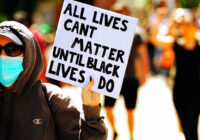One inevitable consequence of the rise of the consumer society and the ever more sophisticated technology it requires to survive and expand is the progressive replacement of every aspect of natural human culture by consumable simulacra. When the process involves linking the increasing variety of simulacra together into the semblance of a coherent whole that can be treated as a system, the result is hyperreality. The scientist Alfred Korzybski remarked that “the map is not the territory.” Hyperreality exists as a kind of map that so completely covers the territory that it finds a way of replacing all its original features.
Like the map, everything hyperreality contains is artificial, made to facilitate our understanding but also to deceive us into believing we may rationally account for all the details. But in contrast with maps, hyperreality carries the illusion of having more than two dimensions. The illusion owes its impact in part to the sophisticated methods of fabrication, but even more so to the fact that we collectively want to believe in the coherence of the three dimensions.
Will Big Pharma Continue to Own the World’s Health?
What we fail to notice, however, is that in contrast with Einsteinian space-time — which scientists recognize as the fundamental structure of the universe — hyperreality lacks the fourth dimension, time. Reality is always becoming itself. Hyperreality has already become what it is. It exists as a static prop, like a Hollywood movie set. Its various elements sit alongside each other to prop up the world we are invited to believe in.
Much of the belief depends on the production of canned ideas that become a convenient substitute for perception. In our technology-orientated world, pseudoscience plays a key role. While scientists struggle with the structural uncertainty of quantum mechanics or their frustrating quest to understand dark matter and dark energy, humanity relies on its media to consume pseudo-science and build its faith in hyperreality.
Pseudoscience enters our lives every day through the innumerable studies our various media present as “news.” By the time any body of research takes the form of a media-friendly story, it will undergo a hyperreal transformation. One glaring example is a piece of manipulated research that has in recent weeks made the rounds of the right-wing media in the US. On April 26, it even featured in the discourse of Fox News’ Tucker Carlson. Newsmax covered it in an article with the title: “White Liberals More Likely to Have Mental Health Problems, Study Shows.”
Today’s Daily Devil’s Dictionary definition:
White liberal:
A mythical being invented by the media in the US to found the hyperreal idea that US society is composed of a pair of diametrically opposed camps distinguished on the basis of two artificially defined value systems, apparently designed with the specific purpose of preventing the majority of citizens from becoming aware of the wide range of serious political issues that any complex democracy will be permanently faced with
Contextual Note
In a remarkable performance on Monday focused on the burning question of the enforced wearing of masks, Carlson managed to demonstrate how devoted he is to pseudo-scientific distortion as he claimed that “a Pew survey from last month found that 64% of white Americans who classify themselves as ‘liberal’ or ‘very liberal’ have been diagnosed with an actual mental health condition.” Not only was the Pew survey published in March 2020, making it at best old news, but the figure he cited was significantly higher than what reported by other right-wing news outlets. And there was no diagnosis but self-reporting: “34 percent of liberals reported having mental health problems,” according to The Washington Free Beacon.
But the problem isn’t in the details. It is much broader, affecting the entire culture. It stems from three combined sources of hyperreal distortion.
The first is the survey itself. Because it produces statistics that can be displayed in a graph, people attribute to it the status of science. An enterprising PhD candidate with a personal political agenda and a Twitter account, hoping for a career in either statistics or politics (or both), can then step up and make it look even more scientific by “breaking down” the statistics, correlating them with other statistics and using terms proper to specialized language such as “aggregate indexes” and “dispositively.” The young man in question, Zach Goldberg, has defined for himself the mission of reporting on the status of whiteness and wokeness in the US.
The second source of distortion is the propensity of the media to use both the primary source (the Pew survey) and the secondary source (Goldberg’s tweets) to announce some deep truth about society itself. With the aim of attracting readers and viewers, the media jump at the opportunity to reveal a deep, disturbing truth. Most articles about climate change, health, diet, economic trends, the cosmos and UFOs fall into this pattern. They all begin with something rooted in reality and based in either scientific fact, social observation or polling. But they quickly transform that basis into the illusion of a new and troubling feature of our everyday hyperreality.
The third source of distortion is the need in the US to reduce everything to an oppositional binary choice. Even as the idea of gender diversity has now displaced the obvious and very real binary division between male and female, most Americans believe there are two subsets of humanity called “liberal” and “conservative.” Even the analysis of subtle social scientists such as George Lakoff feeds into this requirement of hyperreal belief in US society. Americans are conditioned to believe that they themselves are, or at least should be, in their essence, either a liberal or conservative. This is an amazing ideological accomplishment.
The surveys themselves sometimes undermine the dominant binary thesis by highlighting the inconsistencies within the categories. But the hyperreal binary distinction remains as the ultimate buttress of a political system that requires the belief in oppositional thinking. It underpins an electoral system designed to create the conviction that the two parties authorized to govern represent the dual essence of the American electorate.
Historical Note
The binary meme has been both complicated and reinforced by the reemergence in recent years of Americans’ awareness of the racial divide. This awareness, to some extent, lay dormant following the legal gains and cultural shifts associated with the 1960s civil rights movement. In an article published by Tablet magazine last August, during protests over the murder of George Floyd, Zach Goldberg documented the rise of this new sensitivity to the abiding racial question in the US as reflected in the news. He traced statistics from the media over the past 50 years to demonstrate the rise of the phenomenon he identifies with the “wokeness” that has infected the minds of white liberals.
To make his point, Goldberg presents two dubious assertions as if they were truisms. He begins by citing “the absence of legal discrimination in the post-affirmative-action era.” This is technically true but culturally false. One prominent feature of hyperreality consists of using the formality of the explicit to hide the implicit. In this case, the inert text of the law obfuscates the informal, organic reality of culture.
Goldberg then claims that, thanks to their media, white liberals are guilty of “concept creep” when they claim that racial injustice is real. He cites “the immense absolute improvements in the quality of life of the average Black person over the past half century” as if it was a documented fact. The key word here is “absolute.” Although he offers no details, Goldberg is almost certainly thinking of the statistics — his unique source of absolute truth — that demonstrate some measurable progress in material wealth within the black community.
Goldberg’s hopes to find and punish the culprits who have led white liberals to adopt a belief system predicated on the defense of blacks. He affirms that “publications like The New York Times have helped normalize among their readership the belief that ‘color’ is the defining attribute of other human beings.” He wants us to “de-emphasize these categories and unite in pursuit of common interests.”
This abstract advice has some merit, but it is at odds with social reality. Zach Goldberg, Tucker Carlson and many others on the right have been contributing with their own “concept creep” to instill a belief in what is truly a hyperreal category, their designated enemy: the white liberal.
*[In the age of Oscar Wilde and Mark Twain, another American wit, the journalist Ambrose Bierce, produced a series of satirical definitions of commonly used terms, throwing light on their hidden meanings in real discourse. Bierce eventually collected and published them as a book, The Devil’s Dictionary, in 1911. We have shamelessly appropriated his title in the interest of continuing his wholesome pedagogical effort to enlighten generations of readers of the news. Read more of The Daily Devil’s Dictionary on Fair Observer.]
The views expressed in this article are the author’s own and do not necessarily reflect Fair Observer’s editorial policy.
Support Fair Observer
We rely on your support for our independence, diversity and quality.
For more than 10 years, Fair Observer has been free, fair and independent. No billionaire owns us, no advertisers control us. We are a reader-supported nonprofit. Unlike many other publications, we keep our content free for readers regardless of where they live or whether they can afford to pay. We have no paywalls and no ads.
In the post-truth era of fake news, echo chambers and filter bubbles, we publish a plurality of perspectives from around the world. Anyone can publish with us, but everyone goes through a rigorous editorial process. So, you get fact-checked, well-reasoned content instead of noise.
We publish 2,500+ voices from 90+ countries. We also conduct education and training programs
on subjects ranging from digital media and journalism to writing and critical thinking. This
doesn’t come cheap. Servers, editors, trainers and web developers cost
money.
Please consider supporting us on a regular basis as a recurring donor or a
sustaining member.
Will you support FO’s journalism?
We rely on your support for our independence, diversity and quality.






